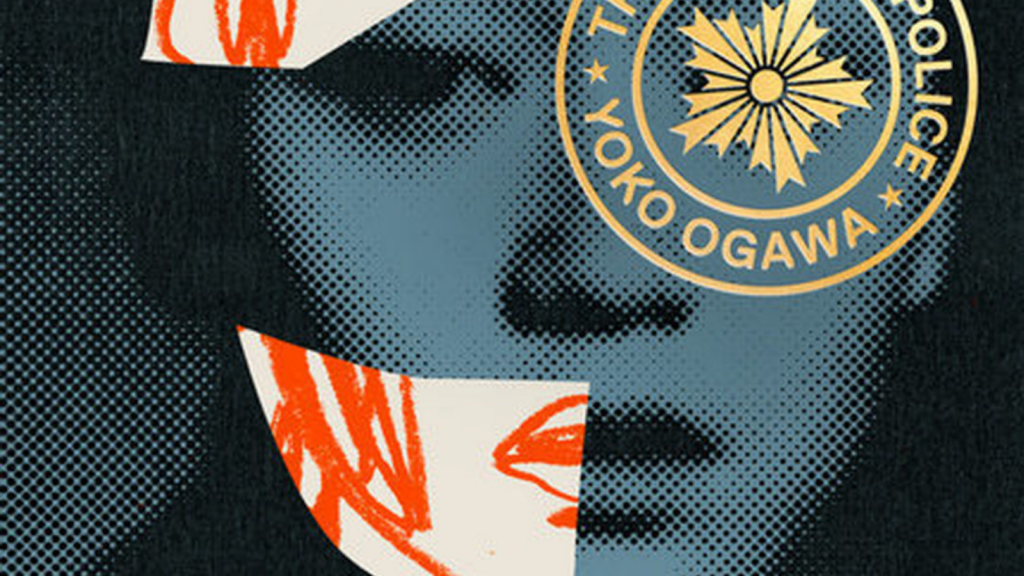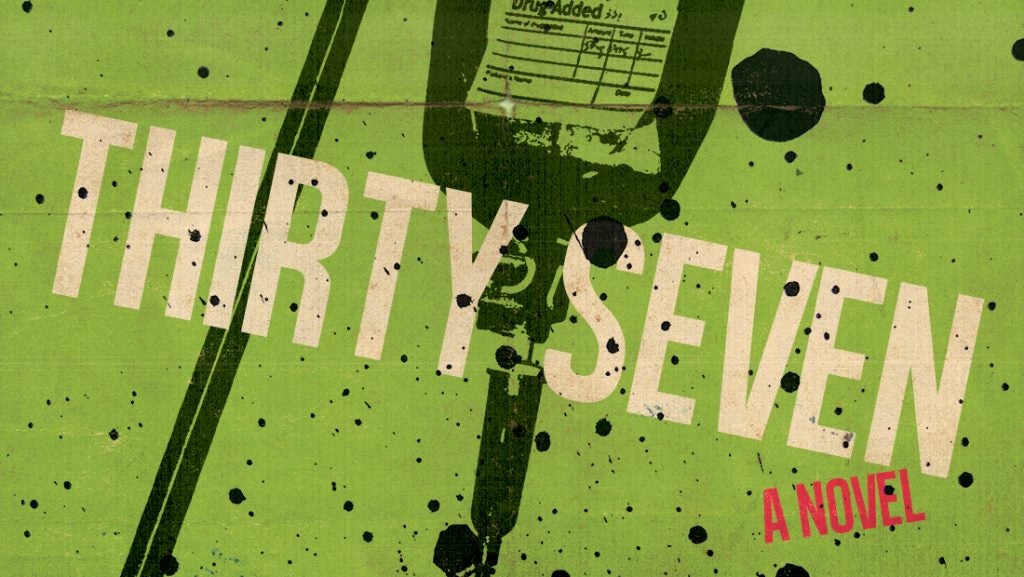The unnamed island of Yoko Ogawa’s novel, The Memory Police (originally published in Japanese in 1994 and translated into English by Stephen Snyder in 2019), is a hazy, unsettling place where things inexplicably disappear. The disappearances range from mundane objects, such as hats or perfume, to wildlife like roses and birds. The island’s residents always have a sense of when something is about to go, even if they never know what it will be. Whenever something disappears, the residents lose all affective ties, memories, and even understanding of whatever the object was. The disappearances have become such an integral, accepted part of life that each subsequent disappearance garners little response. Most residents accept the disappearance, discard the object if possible, then continue with their lives. If they are caught with disappeared objects or indicate that they retain memories, they are taken away by the Memory Police.
The unnamed narrator’s mother can remember every forgotten object and hides many of these objects in a chest of drawers hidden in their basement. When the narrator is a young girl, her mother shows her some of these objects, explaining memories attached to each one. But the narrator, who falls prey to the full brunt of the disappearances, feels only emptiness and confusion when she encounters these objects that should no longer exist. Eventually, the narrator’s mother is taken away by the Memory Police, too. The novel charts the narrator’s struggle against the disappearances and her desire to protect her editor, who can retain his memories like her mother, from the Memory Police as the island continues to fall into disarray.
One of the most striking images of the novel is the titular Memory Police. Most reviews of Ogawa’s novel focus on the fascistic function of the organization, remarking on the timeliness of the novel’s translation given the increase in global fascism over the last several years. It is impossible to ignore the echoes of Nazi Germany and the treatment of Jewish people that Ogawa draws on, especially regarding the Memory Police themselves and the loaded imagery of the cramped, hidden enclave that the narrator builds within her home to hide her editor. And those echoes are intentional. From childhood, Ogawa expressed a keen interest in The Diary of Anne Frank, even devoting two of her own books to Frank’s life—a book of essays, Recollections of Anne Frank (アンネ・フランクの記, Furanku no kioku) in 1995 and a book for young readers, Visiting Anne Frank (アンネ・フランクをたずねて, Anne Furanku o tazunete) in 2011. Ogawa visited the hidden annex in Amsterdam as part of her research, touching the things that once belonged to Frank herself, getting a sense of how bodies fit within such tight quarters.
But the heavy emphasis on the Memory Police themselves obscures the larger argument that Ogawa makes about the nature of storytelling and, in particular, about historical revisionism. Rather than situating the Memory Police as the true antagonists in the story, the novel instead points to the power of invisible historical processes and how human beings participate in these processes. The Japanese title of the novel is 密やかな結晶 (Hisoyaka na Kesshō), which roughly translates to secret or quiet crystallization. Unlike the English title, the original Japanese title does not focus on a specific group of bad actors but on a surreptitious, societal process underpinning the entire novel.
Emphasizing a set of individuals or an organization creates an out, someplace we can point to when we ask why injustice happens. How many times has police brutality been brushed aside as the actions of “a few bad apples?” How often do organizations fixate on specific instances of racial discrimination as a way to avoid talking about the huge systemic overhaul necessary to address historical inequality? How many diversity panels have been created to signal social engagement while maintaining the status quo?
The Memory Police are an easy target within the novel’s world; they do horrible things and act in frightening ways. But they do not seem to control the things that disappear. As the novel progresses, it seems they simply flow with the disappearances, using the situation to their political advantage. They reinforce the disappearances, ransacking houses and taking people away if they show signs of memory, but they are not an all-powerful entity. They are a striking red herring that catches our eye as the underlying process of crystallization continues unabated.
The fiftieth anniversary of World War II was fast approaching when the novel was initially published in 1995, which meant that The Memory Police hit the scene amid renewed conversations around Japan’s role in the war, especially when it came to atrocities committed by the Japanese empire and the nature of memory production. Japan has long struggled with acknowledging historical atrocities and its colonization of the Asian mainland and other countries in the Pacific. One of the most common refrains Japan has used as a nation to sidestep responsibility is to blame all wartime acts on the government and the military at the time. The general populace is thus painted as unwilling participants or as individuals duped into the wartime project. It is easy to brush off responsibility when it was those people back then who were “the problem.”
For decades after the war, there was outright denial from many quarters that certain historical events even occurred—such as the massacre of at least 40,000 Chinese civilians and the rape or mutilation of countless Chinese women, commonly known as the Rape of Nanking, in 1937. As Reiko Tachibana notes in her book Narrative as Counter Memory, “Japanese discrimination against other Asian peoples, especially Koreans, again rose to the surface [in the 1990s], and the government continued to censor textbooks that acknowledged Japan’s crimes in Asia.” Even today, there is heated nationalistic grandstanding from some quarters about the historical legitimacy of “comfort women,” young women and girls from colonized countries who were forced into sexual slavery by the Japanese Imperial Army, the majority of whom were from Korea and China. The discussions regarding official state apologies and reparations for these and other atrocities have reappeared as recently as January 2021. There are so many intentional gaps in Japanese history regarding WWII that many Japanese citizens aren’t even aware of these events. Or these historical facts are painted as propaganda pushed by enemies of the Japanese state and shouldn’t be believed.
It’s within this historical milieu that Ogawa’s novel takes on its most piercing critique. How is it possible to forget so much so quickly, and how does the loss of memory impact the way we act in the present? The disappearances are regrettable, like the loss of harmonicas or the loss of several different types of food, but they generally seem harmless at first. For most of the disappearances, the objects appear self-contained—most of us could survive if we completely forgot what a harmonica was or if we could no longer eat a celery stalk. It’s easy in this sense to understand how the disappearance of minor objects would be accepted over time as no big deal. But with the smaller disappearances come increasingly troubling ones, objects that are a little more complex and abstract: photographs, maps, and books. Eventually, body parts begin to disappear. It becomes evident that these disappearances, while inconsequential when we consider them on a case-by-case basis, add up to devastating results. Once we learn how to forget, even the most seemingly unimportant things, the very act of forgetting becomes easier. At one moment, the narrator asks her editor, simply called ‘R’, whether he believes the hearts of those who forget are “decaying.” He replies,
“I don’t know whether that’s the right word, but I do know that you’re changing, and not in a way that can be easily reversed or undone. It seems to be leading to an end that frightens me a great deal.”
The uncritical acceptance of smaller disappearances produces a clear line to larger, more devastating disappearances. In the stories the narrator recounts from her mother or the accounts given by elders on the island, the disappearances have happened for some time, giving the islanders plenty of time to acclimate to them and naturalize the process. Even these early disappearances are recalled so matter-of-factly that it seems little was done to investigate the unknown process behind these disappearances. Or perhaps at some point, something was being done, but all memory of that has disappeared, too. Perhaps at some point, the very concept of resistance vanished from memory. With no other recourse, most islanders simply continue to accept each disappearance—even as they increase in number and significance.
To forget is to be disconnected from the past, to make it easier to miss the connections that link events or people together in the present. The complete loss of an object, like a map, goes beyond the loss of the map as a physical thing. What disappears with it is the knowledge of where you are in relation to others on the island, the ability to travel, the understanding that other islands exist beyond the narrator’s limited purview. Once a critical mass of information is lost, the linkages between them disappear, making it easier to believe that the world we live in now is how things have always been and that there is no need—and no possible way—to chart another path.
The novel provides some hope that the disappearances are not permanent and that the decaying of hearts can eventually stop. Although the islanders call them “disappearances,” the objects do not physically disappear. Instead, the islanders get rid of these objects themselves after their attachments to them are gone, either by destroying them or throwing them into the river. The disappearances are not a physical phenomenon but a mental and affective one. The Memory Police only exist because some on the island are not affected by the disappearances. Although the Memory Police have rounded up many of the people who do not forget, many, like R, remain safely hidden.
There are also some glimmers of hope for those who do forget. The narrator falls victim to the disappearances but tries to resist, mostly for the sake of R. For the most part, she finds it difficult to mentally grasp on to objects that have disappeared. But there are moments where hints of memory break through to her consciousness. She sees someone wearing something atop their head and, in a sudden jolt of memory, is able to remember what a hat is even though hats disappeared from the island several years ago. In another scene, she sees something fluttering through the air above her and remembers what a bird is. There are no strong emotions or clear memories attached to these recollections, but she can still pull these disappeared things out of the depths of her mind. They are not entirely forgotten, though perhaps buried deep within her psyche.
Once things are forgotten, it is difficult to get them back. Things ossify, crystallize until the world becomes something naturalized and accepted—things have always been this way. Then the cycle of forgetting begins to perpetuate itself. In a conversation with R, the narrator illuminates this vicious cycle,
“It’s disturbing to see things that have disappeared, like tossing something hard and thorny into a peaceful pond. It sets up ripples, stirs up a whirlpool below, throws up mud from the bottom. So we have no choice, really, but to burn them or bury them or send them floating down the river, anything to push them as far away as possible.”
Forgetting is twofold. On the one hand, the natural passage of time obscures the past from us the farther we are from it. But forgetting can also be a conscious decision. While we describe certain historical events or people as “forgotten,” it’s rare that such wholesale forgetting happens. The incarceration of Japanese Americans during WWII has only relatively recently become a critical historical event taught in schools; for many white Americans, this was considered “forgotten” history. Yet, the Japanese American community never forgot. The Tulsa Massacre of 1921, where mobs of white citizens brutally attacked the Black residents and businesses of the Greenwood District, is another significant historical incident that has been largely “forgotten” until recently. But the Black citizens who survived the attack, their descendants, and other Black Americans never forgot what happened. In both of these cases, the natural human process of forgetting was compounded by the intense desire of white Americans to forget these things ever happened, to never speak of them again. They were made to disappear until most American citizens truly did forget.
The disappearances on Ogawa’s fictional island may have started as a natural phenomenon, but at some point, it seems that the crystallization joined with human acceptance, gaining momentum as more and more people came to accept it. Ogawa pulls no punches with how the novel pans out; while there is some hope, the consequences of generations of forgetting are entirely, painfully realized. Even characters, like the narrator, who try their best to push back against the forgetting, fall prey. The warning of The Memory Police is thus not to beware of fascistic organizations that try to control the populace, but instead to beware of the invisible processes that are constantly occurring that allow such organizations to appear. By the time these entities appear, it is too late.
Julia Shiota is a writer and editor living in Minnesota. Her short fiction has appeared in Catapult and her other writing can be found in Poets & Writers, the Asian American Writers Workshop, Electric Literature, and elsewhere.







